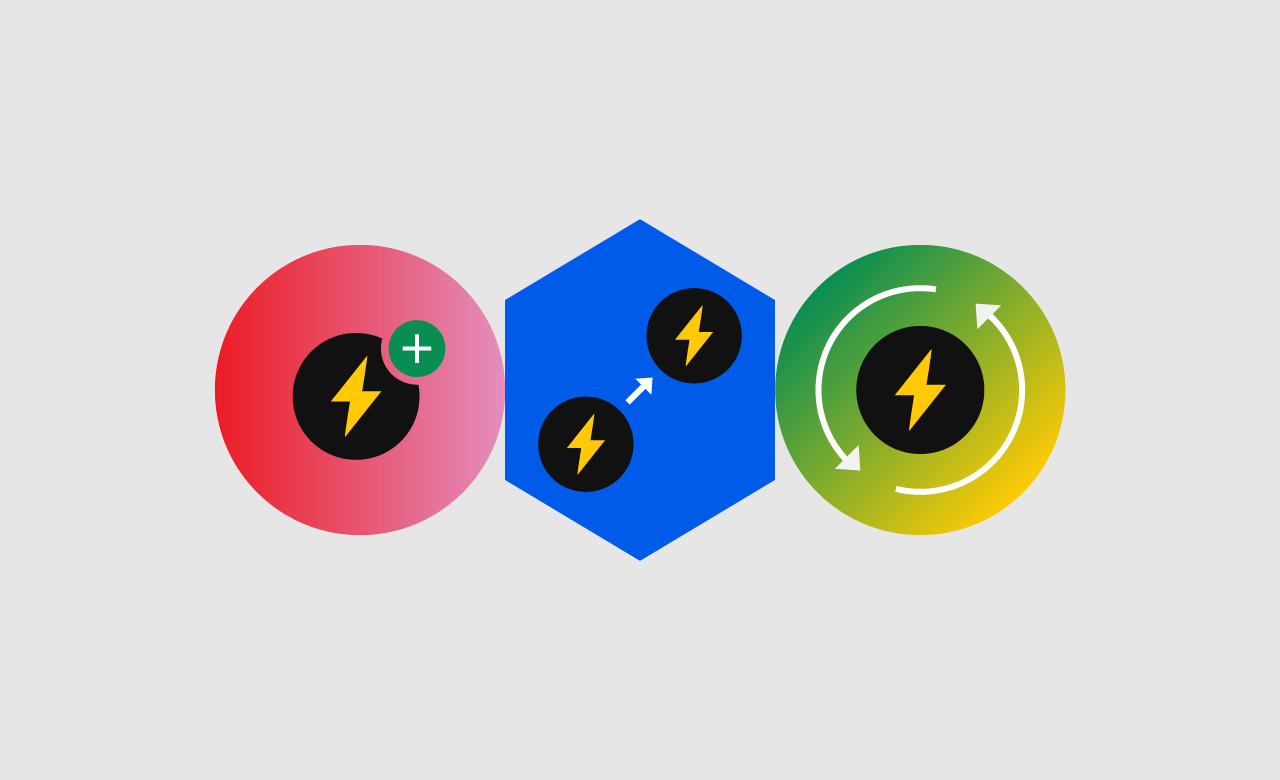Panzura Powers Future of Exabyte-Scale Data as Member of Single Namespace Working Group (SNS)
Panzura Symphony Heterogeneous Orchestration Aligns with the Principles of the SNS Initiative for Seamless Data Mobility
Panzura
Our enterprise data success framework allows enterprises to build extraordinary hybrid cloud file and data systems.
![]()
Platforms
Complementary file and data platforms that deliver complete visibility, control, resilience, and immediacy to organizations worldwide.
Solutions
From data resilience to global file delivery, we solve the toughest and most important data problems facing organizations globally.
Resources
Find insights, news, whitepapers, webinars, and solutions in our resource center.
Company
We bring command and control, resiliency, and immediacy to the world’s unstructured data. We make it visible, safeguard it against damage, and deliver it instantly to people, workloads, and processes, no matter where they are.
5 min read
 Sanjay Paithankar
:
Apr 30, 2025
Sanjay Paithankar
:
Apr 30, 2025

Table of Contents
Key performance enhancements to hybrid cloud file platform CloudFS drive autonomic data fabric for Panzura customers
Key Takeaways:
Business continuity depends on real time access to critical data, which demands more than just robust storage solutions. Enterprises need intelligent systems that can not only weather storms but also proactively adapt, optimize, and ultimately, heal themselves with minimal human intervention.
With the latest evolution of our hybrid cloud file services platform, CloudFS, we're taking yet another step forward in delivering a truly autonomic data fabric.
The release of CloudFS 8.5.1 Adapt isn't just about incremental improvements; it introduces key performance enhancements that fundamentally empower your data fabric to become more autonomic and resilient.
Let’s dig into how this release focuses on delivering tangible performance gains that directly translate into a more self-sufficient and resilient hybrid cloud file storage environment.
Panzura nodes are the basis for fast, local-feeling file performance and now, CloudFS 8.5.1 extends our recently released Instant Node functionality to allow you to quickly replicate the configuration of a healthy, existing node onto a new one.
With our new node cloning option, there’s no cached data to move and no metadata to sync. You simply clone the node, along with its metadata and cache disks, then detach the disks from the cloned node and attach them to the new node.
This dramatically reduces the time and effort required to scale your environment. New capacity can be brought online swiftly, minimizing any potential performance dips or vulnerability windows.
When a node encounters an issue, the ability to rapidly commission a replacement ensures the file system can quickly restore its intended performance and redundancy levels with minimal administrator effort. This accelerated recovery process is a crucial aspect of self-healing, allowing the system to "mend" itself efficiently.
The CloudFS platform incorporates optimizations that minimize the amount of data that needs to be transferred during critical operations like disaster recovery failover or migrating to new infrastructure.
CloudFS’s hybrid cloud architecture is a hub, spoke, and mesh, which allows every node to have a complete, immediately consistent copy of the metadata of the entire file system. This means the cloned node only needs to check in with the cloud object store to see if anything has changed in the few moments it took to make the clone. It downloads those deltas if they exist and because CloudFS stores data blocks so efficiently, the node is egressing the most minimal possible amount of data.
Lower bandwidth consumption translates directly into significant cost savings and drastically reduces the time required for recovery or migration. Streamlined processes also lessen the operational burden on your IT teams.
CloudFS 8.5.1 Adapt provides multiple rapid recovery pathways at the node level. By intelligently utilizing metadata, local cache, or hypervisor snapshots, you can bring a failed node back online at speed, even across different AWS or Azure cloud availability zones.
Restoring CloudFS nodes from hypervisor snapshots enables rapid recovery using metadata and cache disks, without requiring the OS disk. It allows administrators to leverage their existing VM-level snapshot policy to rapidly restore nodes from system-generated daily backups stored in the cloud service provider bucket or from a manually-taken system configuration backup.
This drastically minimizes downtime and ensures continuous data availability, even in the face of localized failures or broader infrastructure outages.
It’s a direct manifestation of self-healing. The CloudFS hybrid cloud environment can leverage various built-in mechanisms to quickly recover from node-level failures, often without requiring extensive manual data restoration. The ability to recover across availability zones or regions adds an automated layer of resilience against wider infrastructure issues, showcasing a powerful self-preservation capability.
CloudFS 8.5.1 gives Panzura customers yet another option for their virtual Panzura nodes, with support for Proxmox. For enterprise virtualization, Proxmox Virtual Environment (VE) offers a tightly integrated open-source solution. It unifies the powerful KVM hypervisor and lightweight LXC containers alongside software-defined storage and networking capabilities on a single platform.
This is particularly good news for those looking for a high-performance, cost-effective flexibility in their virtual environment. CloudFS continues to seamlessly support VMware, Hyper-V, Nutanix AHV, and Linux KVM.
CloudFS now supports new qualified cloud instances on both AWS and Azure, offering enhanced performance and cost optimization. On AWS, the memory-optimized r6i is ideal for storage-heavy workloads, while the r6in provides high network bandwidth for low-latency, high-throughput storage use cases. The general-purpose m6i offers a balanced compute, memory, and networking profile. For Azure, the D8s_v5 VM delivers balanced compute, memory, and improved performance for enterprise workloads, and the D8as_v5 provides a cost-optimized option for efficient general-purpose compute and storage operations.
Ever-increasing storage costs are the bane of the infrastructure and operations leaders’ existence. One of the promises of cloud object storage is flexibility and elasticity and so with that in mind, Panzura customers on CloudFS 8.5.1 Adapt can now secure additional capacity in increments of just 5TB, following their initial 25TB minimum.
To help with planning and managing storage capacity effectively, 8.5.1 also features a new managed capacity graph on the CloudFS console to track peak monthly usage, 24-hour trends, and progressive consumption history and usage trends for up to 5 years, all compared with purchased capacity.
From the outset, CloudFS is designed to achieve local-feeling performance. Now, with support for 100gbps interfaces, Regional Store to accelerate download speeds for users in areas of the world subject to higher latency, and enhanced file operations, it’s on par with the highest-performance file systems, regardless of distance.
These performance enhancements in CloudFS 8.5.1 Adapt are not just about making things faster; they are fundamental building blocks for a truly autonomic — self-healing — data fabric. By optimizing core operational processes, accelerating recovery mechanisms, and providing the intelligence for proactive management, we are empowering your Panzura environment to:
CloudFS 8.5.1 Adapt represents a significant step forward in our commitment to providing you with an intelligent, resilient, and high-performing data management solution. By focusing on these key performance enhancements, we are bringing you closer to a future where your data fabric can adapt, recover, and ultimately, heal itself with greater autonomy.
CloudFS is a high-performance hybrid cloud platform underpinned by a global hybrid cloud file system, which enables local-feeling file operations while consolidating file storage into cloud-based object storage. CloudFS plays a crucial role in allowing enterprises to modernize storage infrastructure and leverage the flexibility and cost-effectiveness of a wide variety of cloud object storage, including public and government cloud solutions from AWS, Azure, Google Cloud Platform, Wasabi and many others as well as on-premises object storage solutions.
Find out more about CloudFS here.


Panzura Symphony Heterogeneous Orchestration Aligns with the Principles of the SNS Initiative for Seamless Data Mobility

Inherited Data Resilience Depends on Configuration with Solutions Like PeerGFS While CloudFS Builds Inherent Threat Control and Data Loss Mitigation...

A Decision Framework on Panzura CloudFS vs Centralized Solutions Like PeerGFS with Critical Considerations When Your Future Growth Demands the Right...